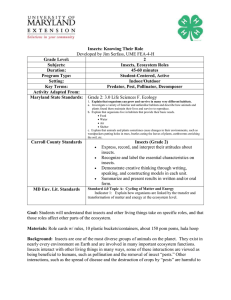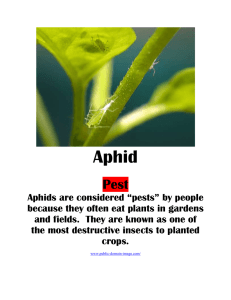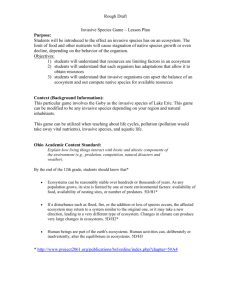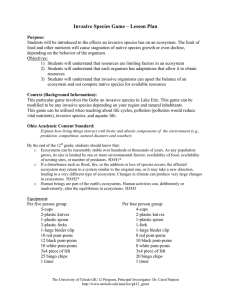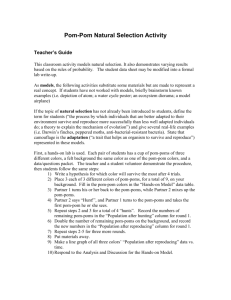Insects: Knowing their Role - Directions
advertisement
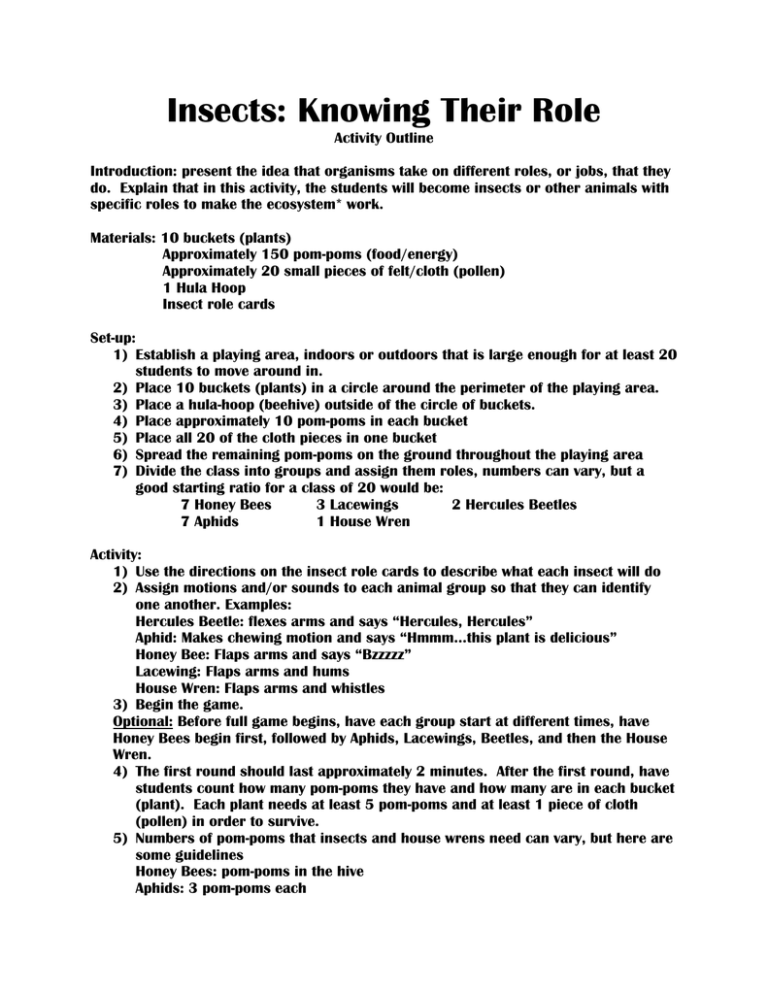
Insects: Knowing Their Role Activity Outline Introduction: present the idea that organisms take on different roles, or jobs, that they do. Explain that in this activity, the students will become insects or other animals with specific roles to make the ecosystem* work. Materials: 10 buckets (plants) Approximately 150 pom-poms (food/energy) Approximately 20 small pieces of felt/cloth (pollen) 1 Hula Hoop Insect role cards Set-up: 1) Establish a playing area, indoors or outdoors that is large enough for at least 20 students to move around in. 2) Place 10 buckets (plants) in a circle around the perimeter of the playing area. 3) Place a hula-hoop (beehive) outside of the circle of buckets. 4) Place approximately 10 pom-poms in each bucket 5) Place all 20 of the cloth pieces in one bucket 6) Spread the remaining pom-poms on the ground throughout the playing area 7) Divide the class into groups and assign them roles, numbers can vary, but a good starting ratio for a class of 20 would be: 7 Honey Bees 3 Lacewings 2 Hercules Beetles 7 Aphids 1 House Wren Activity: 1) Use the directions on the insect role cards to describe what each insect will do 2) Assign motions and/or sounds to each animal group so that they can identify one another. Examples: Hercules Beetle: flexes arms and says “Hercules, Hercules” Aphid: Makes chewing motion and says “Hmmm…this plant is delicious” Honey Bee: Flaps arms and says “Bzzzzz” Lacewing: Flaps arms and hums House Wren: Flaps arms and whistles 3) Begin the game. Optional: Before full game begins, have each group start at different times, have Honey Bees begin first, followed by Aphids, Lacewings, Beetles, and then the House Wren. 4) The first round should last approximately 2 minutes. After the first round, have students count how many pom-poms they have and how many are in each bucket (plant). Each plant needs at least 5 pom-poms and at least 1 piece of cloth (pollen) in order to survive. 5) Numbers of pom-poms that insects and house wrens need can vary, but here are some guidelines Honey Bees: pom-poms in the hive Aphids: 3 pom-poms each Lacewings: 5 pom-poms each House Wren: 10 pom-poms each Optional: Record the numbers of organisms left at the end of the round 6) For the following rounds, play the game with the numbers surviving plants and animals, or adjust the numbers in each group and play each round as a separate game. Debrief: 1) Ask students what they thought of the role that they were in. Was it easy? Difficult? Why? 2) Have students explain why their role was important, what did they do for the ecosystem? 3) If numbers were recorded at the end of each round, show students how populations were affected by one another. Sample Question: How did the number of pests at the start affect the number of plants at the end? 4) Have students describe how people can hurt/help insects in the ecosystem. Sample Question: How might killing aphids with pesticides affect lacewings, or honey bees? *Ecosystem: all of the connected components: non-living (abiotic), living (biotic), and man-made (cultural), that interact with one another in a particular area.
